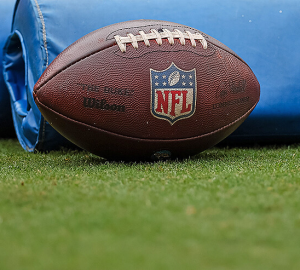So you’re planning a day at the Ascot Racecourse and you’re ready to try your luck. Picking a winning horse isn’t just about luck, it’s an art. With the right knowledge and strategy, you can increase your odds significantly.
You might be wondering, “What should I look for in a winning horse?” or “How can I predict the outcome of a race?” Don’t worry, we’ve got you covered. This article will walk you through 5 crucial tips to help you pick winning horses at Ascot.
Understanding Ascot Racecourse
Half the battle of picking a winning horse is understanding your battlefield, in this case, the Ascot Racecourse. Known worldwide, this historic racecourse is one of the leading racecourses in the UK.
Consisting of two tracks—jumps and flats—it has held its place in equine history since 1711. What makes Ascot unique? It’s not just the prestige of the races held here; it’s also about the challenging landscape. The track, especially the jumps, requires horses to possess both stamina and speed.
Ascot’s track is right-handed, galloping, and quite stiff. The course’s undulating nature adds another layer to its demanding stature. Horses that have previously raced and won on similarly undulating courses tend to have a comparative advantage here. Therefore, when pondering about the winners, keep these factors at the forefront:
- Course Topography
- Horse’s skills on similar surfaces
- Stamina of the horse on longer courses
To optimize your approach even further, also consider the season and the weather as Ascot’s ground can greatly vary. A wet sprint necessitates different horse capabilities compared to a dry, hot run.
What’s also unique about Ascot? Its spectacle events, of course. The summer race meeting, known as Royal Ascot, is arguably the world’s most famous racing event. It’s not just about the bet-worthy races, but also the high-end style, fashion, and the presence of the royal family.
Understanding Past Performances
Past performances are a crucial aspect to consider when you’re studying horse forms. They give you an idea of how the horse has done on similar courses, weather conditions, and distances. A horse’s racing history provides invaluable insights into its form, strength, and aptitude for different racing conditions.
One way of doing this is by studying the form guide. This is found in the British Racecourses’ comprehensive Ascot race card and includes the last few performances of the horse, listed from most recent to least recent. You’ll find letters demonstrating the horse’s finishing position or reasons it may not have finished. Studying these can tell you if a horse is consistent, improving, or maybe deteriorating in form.
Analyzing Jockey and Trainer Statistics
The expertise of a horse’s jockey and trainer plays a significant role in its racing success. A proficient jockey can significantly enhance the performance of a top-class horse while an accomplished trainer can keep a horse in its peak form through a season.
Analyzing the win percentage of the jockey and trainer can provide telling details on the chances of a horse in a race. It could be highly beneficial if the jockey and trainer have previously excelled at Ascot Racecourse.
The trainer-jockey combination is another crucial factor worth considering. If a particular jockey and trainer have a history of frequent wins when they team up, their horse could have an edge over the competition.
Monitoring Weather Forecasts
It pays to keep an eye on the weather leading up to race day. An unexpected shower or a significant drop in temperature can dramatically affect the track condition. It’s important to note that every horse performs differently under varying weather conditions. A horse that excels in dry weather may falter in the mud, and vice versa. Thus, assessing the potential weather of race day can give you a considerable edge in picking your winner.
Professional gamblers often utilize weather forecasting tools and websites to predict potential track conditions. You can view reliable weather updates for Ascot from a multitude of sources like the BBC Weather, Met Office or Ventusky. By cross-referencing these forecasts, you can increase your accuracy in predicting track conditions.
Analyzing Track Records
In your bid to pick ‘the’ horse that crosses the winning line at Ascot first, analyzing past track records is vital. Different courses have different types of track surfaces, and understanding how a horse performs under different surface conditions can be incredibly beneficial in your selection process.
For example, Ascot Racecourse boasts both flat and jump racing surfaces. Hence, analyzing a horse’s performance on these surfaces can give you a pretty good idea about their adaptability. The Racing Post website provides comprehensive histories of all the runners, allowing you to dig deeper into their individual performances.
Remember, it takes more than just looking at win percentages or the reputation of a horse. You need to dive deeper and look at the bigger picture, as the smallest details can impact that Countdown to Post.
Understanding the Betting Market
In the world of horse racing, the betting market is a complex yet spectacular system of competition among bookmakers and bettors. By observing the Alex gifs in this market, you can identify where most of the money is flowing. Whether it’s a favorite horse or an underestimated contender getting lots of bets, there will always be shifts in the market.
Remember: the betting market is your gateway to potential profits, but it also serves as a collective judgment of thousands of gamblers who are making their individual assessments. So it’s essential to not blindly follow the market. Use its information as another data point in your betting strategy, harmonizing it with your understanding of horses, jockeys, and track conditions.
Analyzing Horse Betting Odds
In essence, these odds represent probabilities. Lower odds indicate a higher chance of the horse winning the race, but remember, these odds are driven by how punters are placing their bets.
For instance, if the majority of bets are going to one horse, its odds will decrease, reflecting a higher perceived probability of winning. In contrast, if a horse isn’t getting many bets, its odds will increase, illustrating a lower perceived probability of winning.
Leverage these odds to your advantage. A horse with high odds might still have a solid chance of winning if the track conditions, jockey experience, and horse’s form align. So while odds are a good starting point, it’s vital to note that they aren’t everything.
It’s practical to see betting odds as a tool rather than the ultimate guide to picking a winning horse. If you balance this tool with your knowledge of horse pedigrees, jockey experience, track conditions, and your intuition, you’ll undoubtedly give yourself a better chance of making successful bets at Ascot.
- Online casino’s safeguards against crime - January 8, 2025
- The Best Slot Games For Low-Budget Play - December 14, 2024
- From Mob Mentality to Digital Thrills - December 10, 2024







